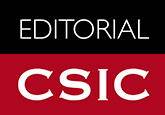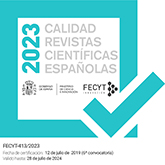Fish communities associated with FADs
DOI:
https://doi.org/10.3989/scimar.1999.63n3-4199Keywords:
FADs, fish assemblages, seasonality, juvenile fish, western MediterraneanAbstract
Two groups of six fish aggregating devices (FADs) were deployed at two locations off the eastern coast of Majorca (Western Mediterranean). Samples were obtained fortnightly throughout a two-year period by means of hauls performed with an experimental purse seine. Two control areas were established to check the aggregation efficiency of the FADs. A total of 16 families and 26 species of fishes were recorded beneath FADs. Pelagic fishes, largely Trachurus picturatus, T. mediterraneus, T. trachurus, Naucrates ductor, Seriola dumerili and Coryphaena hippurus, dominated the fauna. The total fish abundance, number of species and length range of the species confirmed that the FAD community was significantly related to season (recruitment period), resulting in a sequential fish colonisation of the FADs during the study period. Some of the species were present only during a particular period, such as Trachurus spp. in spring and summer. Other species, although evident for a longer period, were more occasional in catches (Schedophilus ovalis, Balistes carolinensis and Polyprion americanus), and some others were also present in small quantities. Diversity and equitability of the fish community associated with FADs were higher in summer than in winter. Many species were more abundant around FADs than in open water controls. The species that showed the most distinct recruitment phase beneath the FADs were N. ductor, S. ovalis, Trachurus spp., P. americanus, S. dumerili, C. hippurus and B. carolinensis. FADs can be considered nursery structures for many pelagic and demersal species, thus having an effect on the redistribution of juveniles. In the deployment of artificial structures as aggregators for fishing purposes one should consider the patchiness and seasonal characteristics of these communities as well as the redistribution aspect for fishery management.
Downloads
Download data is not yet available.
Downloads
Published
1999-12-30
How to Cite
1.
Deudero S, Merella P, Morales-Nin B, Massutí E, Alemany F. Fish communities associated with FADs. Sci. mar. [Internet]. 1999Dec.30 [cited 2024Nov.26];63(3-4):199-207. Available from: https://scientiamarina.revistas.csic.es/index.php/scientiamarina/article/view/856
Issue
Section
Articles
License
Copyright (c) 1999 Consejo Superior de Investigaciones Científicas (CSIC)

This work is licensed under a Creative Commons Attribution 4.0 International License.
© CSIC. Manuscripts published in both the printed and online versions of this Journal are the property of Consejo Superior de Investigaciones Científicas, and quoting this source is a requirement for any partial or full reproduction.All contents of this electronic edition, except where otherwise noted, are distributed under a “Creative Commons Attribution 4.0 International” (CC BY 4.0) License. You may read here the basic information and the legal text of the license. The indication of the CC BY 4.0 License must be expressly stated in this way when necessary.
Self-archiving in repositories, personal webpages or similar, of any version other than the published by the Editor, is not allowed.














